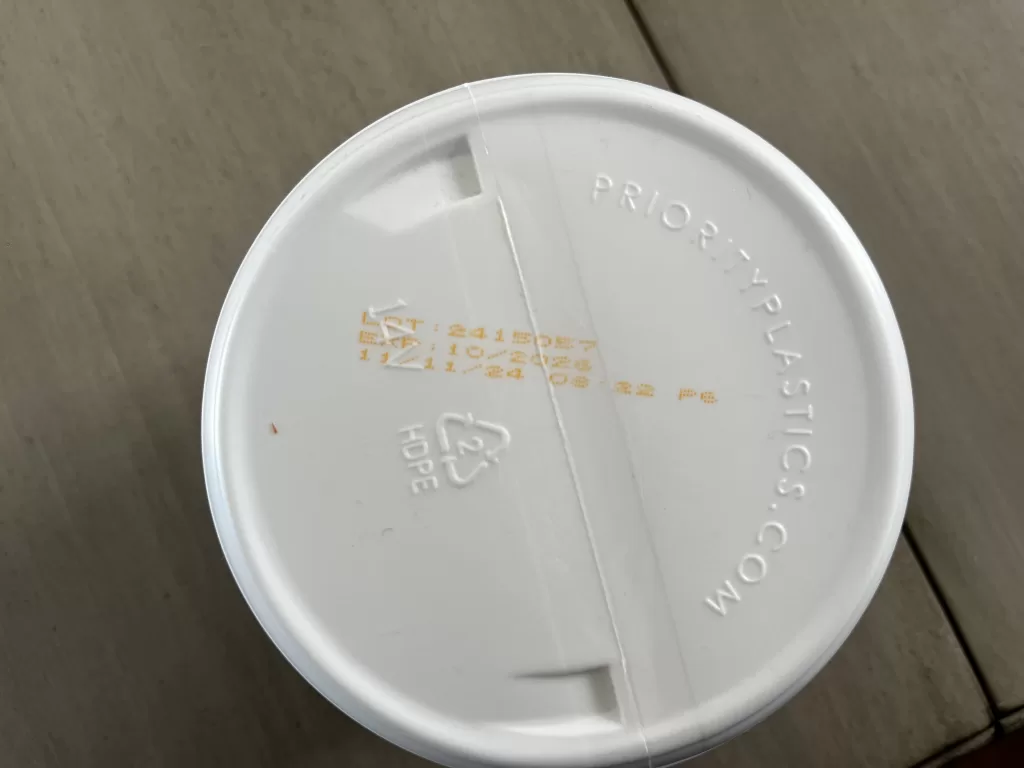So you are getting ready to go to the gym, you grab your pre-workout tub, and instead of finding smooth powder, you see a hard, clumpy block. Your first thought? “Is this stuff expired?… Does preworkout expire? I have no clue.” Don’t worry—you’re not alone.
Pre-workout clumping and questions about its expiration are common issues for fitness enthusiasts and many everyday gym-goers.
In this guide, we’ll answer all your questions about pre-workout shelf life, teach you how to spot if it’s gone bad, and share the best tips for storage and fixing clumps. Once you have read this guide, you’ll save time, money, and frustration.
Related articles: What Happens if You Take Too Much Pre-Workout?, How Long Does Pre-Workout Take to Kick In?, Honey and Salt Pre-Workout, Does Creatine Expire?
What Is Pre-Workout?
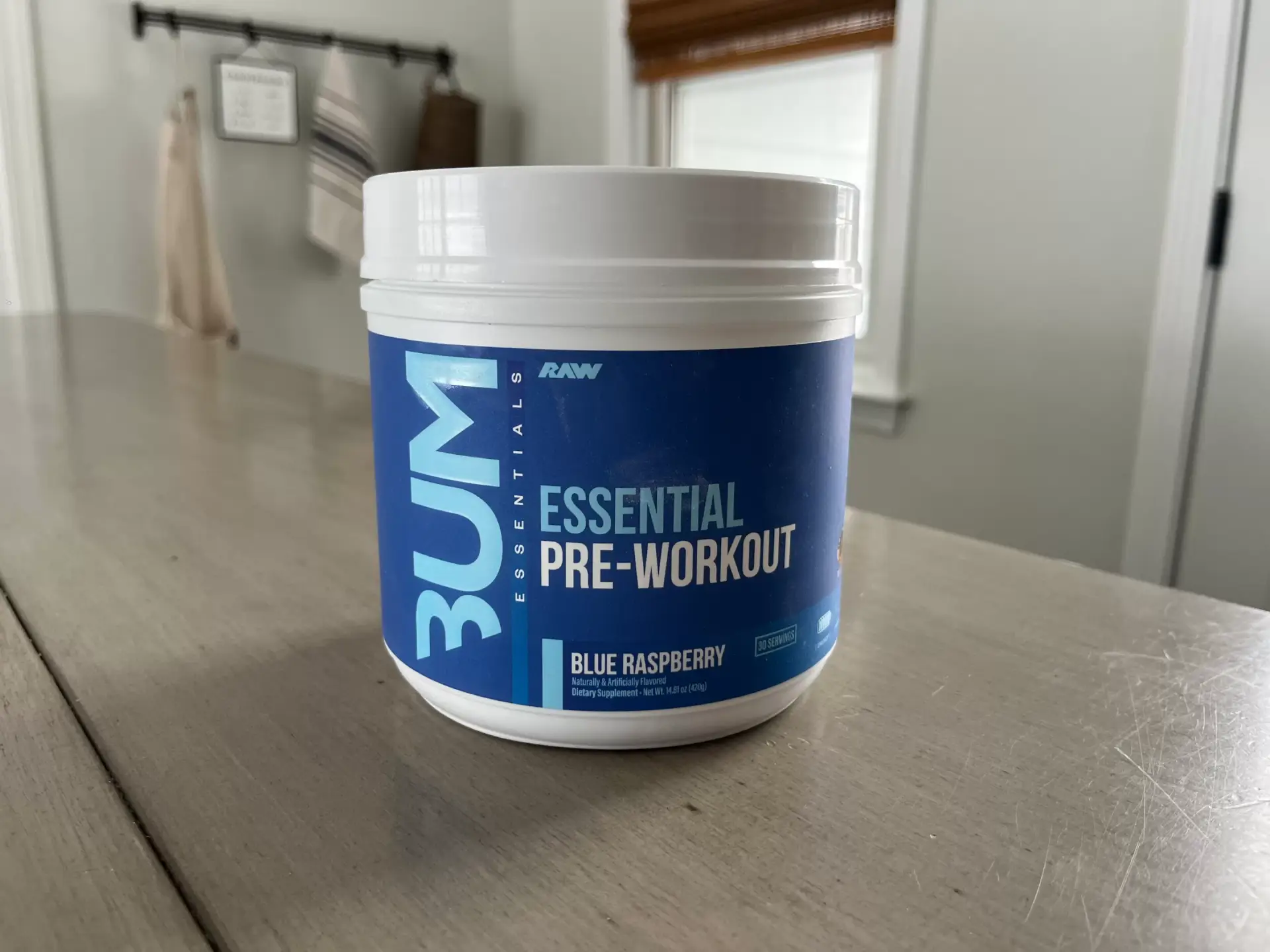
Pre-workout is a type of supplement that’s made to boost your energy, endurance, and focus during workouts. It’s very popular among people who lift weights, run, or participate in high-intensity exercise.
Pre-workout has been a part of my workout routine for years now, and it always gives me the energy boost I need. I would recommend this supplement for anyone on their fitness journey who is looking for some energy, a better pump, and know that it won’t mess up their diet or cause any health issues.
Typically sold as a powder, pre-workout is meant to be mixed with water and consumed 20–30 minutes before exercise.
It contains ingredients like:
- Caffeine: For increased energy and mental focus.
- Beta-Alanine: To reduce muscle fatigue during intense exercise.
- L-Citrulline: To enhance blood flow and muscle pumps.
- L-Tyrosine: To support mental focus and reduce workout-related stress.
- Taurine: For hydration and muscle recovery support.
- Vitamin B12: To promote energy production and reduce fatigue.
- Sodium: To help maintain hydration and electrolyte balance, especially during sweaty sessions.
While pre-workout is great for helping you push through tough sessions, it needs to be stored and used properly to stay effective.
Does Preworkout Expire? (Quick Answer)
Yes, pre-workout does expire. Like most supplements, every pre workout container comes with an expiration or “best by” date.
These dates help make sure that the ingredients remain effective and safe for consumption. While unopened pre-workout can last up to two years, once opened, it is best used within six months.
Expired pre-workout might still be safe to consume, but it can lose potency, and become less effective over time. If you notice mold, an unusual smell, or odd changes in texture, it’s time to toss it.
How to Tell if Pre-Workout Has Expired
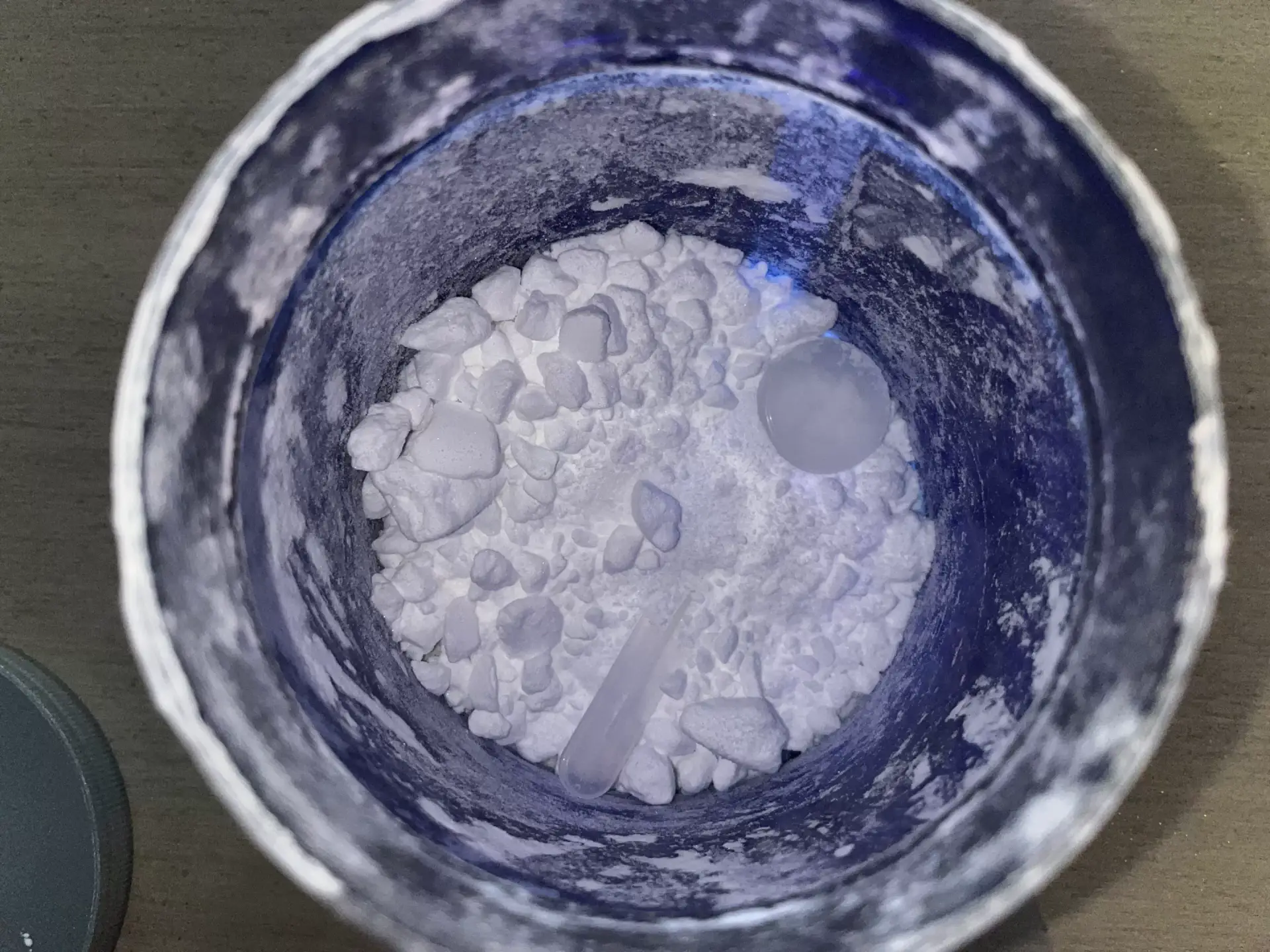
Being able to tell if your pre-workout is expired doesn’t require a lab test—it’s just about knowing the warning signs.
Let’s break down the key indicators of expired preworkout and why they matter.
Clumping: What’s Normal and What’s Not?
A few small clumps in your pre-workout are harmless. This happens because many pre-workouts contain hygroscopic ingredients like creatine and citrulline. So don’t be too alarmed if it just some small clumping.
However, if your pre-workout has transformed into one solid block, that’s a red flag.
Research has shown that these ingredients are particularly sensitive to moisture from the air. Eudy et al. (2013) found that supplements like preworkout and creatine can degrade when exposed to humidity, reducing the potency. So when the entire tub is clumped up, it suggests there has been significant exposure to moisture.
Clumping often coincides with other spoilage signs, such as discoloration or odor. If breaking apart the clumps reveals odd smells or textures, it’s safer to toss it out.
Mold or Discoloration: A Hard No
Mold and discoloration are non-negotiable signs that your pre-workout has gone bad. This is a pretty obvious one, as no one wants to consume moldy pre workout powder, or pre workout that looks like it came from a lab.
Mold usually appears as fuzzy spots, but it might also be subtle, like a powdery film.
Discoloration, on the other hand, might be a little trickier to notice, especially if your pre-workout is a dark color or mixed with multiple ingredients. Compare the powder to its original shade—if it looks dull, faded, or blotchy, something’s wrong.
Mold and discoloration mean that bacteria or other contaminants have invaded the powder, making it unsafe to consume.
Off Taste or Smell: Obvious Signs
Your nose and taste buds are maybe the best tools for spotting expired pre-workout. A fresh tub usually smells slightly sweet or fruity, depending on the flavor. If your pre-workout has a sour, chemical, or musty smell, it’s gone bad.
Taste is another giveaway. If your mixed pre-workout tastes bitter, metallic, or just “off,” don’t risk it. Changes in taste and smell often mean the active ingredients have broken down, and bacteria may be present.
Mixing Issues
One of the less obvious signs of expired pre-workout is how it mixes. Fresh pre-workout dissolves smoothly in water, creating a consistent solution with no gritty or chunky residue.
If your pre-workout clumps together, floats on the surface, or leaves a sludge at the bottom of your shaker, it’s likely time to throw it in the trash
Changes in solubility happen when the ingredients degrade or absorb too much moisture, which alters their physical properties. This doesn’t just affect the taste—it also impacts the effectiveness of the supplement.
Why You Shouldn’t Ignore These Signs of Expired Pre-Workout
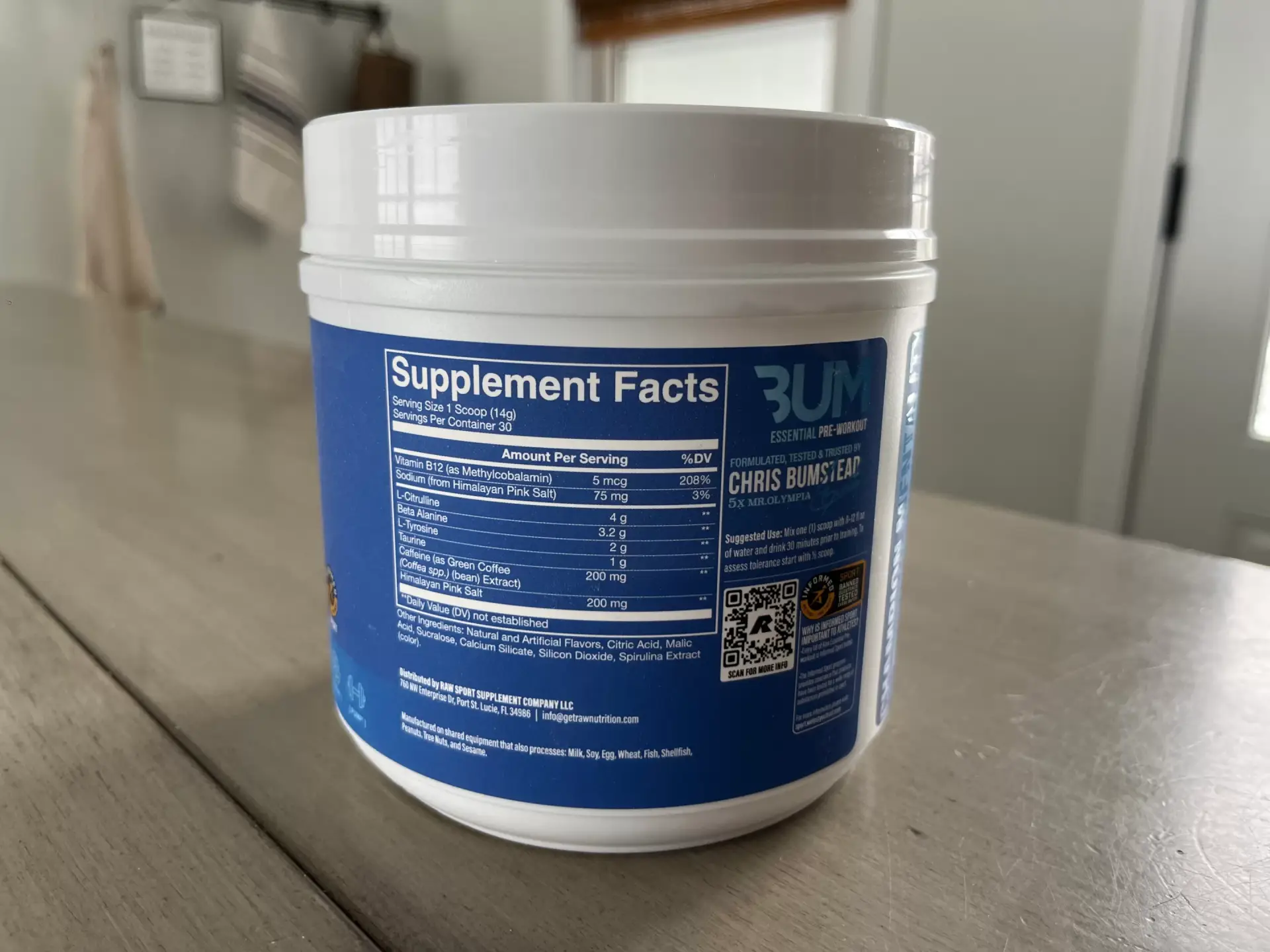
Using expired pre-workout can lead to reduced performance, wasted money, and, in some cases, mild health risks like an upset stomach.
One study reported that 54% of pre-workout users experienced side effects such as nausea, heart abnormalities, and skin reactions (Jagim et al. (2019))
While these reactions can stem from nonexpired pre-workouts, expired or degraded products will 100% exacerbate these adverse effects, particularly if chemical changes have occurred in the ingredients.
When in doubt, it’s better to replace your pre-workout than to risk consuming something spoiled. There is no upside to trying preworkout that might be bad, and considering the relatively low cost of the supplement – just go get a fresh tub of it. You” thank yourself later.
Can Pre-Workout Go Bad After Mixing?
Yes, pre-workout can go bad after mixing, and it happens faster than you might think. Once mixed with water, the powder is exposed to air and moisture, creating the perfect environment for bacterial growth.
How Long Does Mixed Pre-Workout Last?
The general rule is to drink mixed pre-workout within 12 hours, but it’s best to consume it as soon as possible.
If you’re planning to prep it ahead of time, store it in the refrigerator to slow down the degradation process. Beyond 12 hours, the risk of contamination increases, and the active ingredients may lose potency.
To avoid this issue, I just mix my preworkout right before drinking it and heading to the gym. It takes 10 seconds, and I avoid any risk of consuming a preworkout mix that has gone bad.
Are Clumpy Pre-Workout Supplements Safe to Use?
Clumpy pre-workout isn’t automatically bad.
If your pre-workout is still within its expiration date and doesn’t show signs of mold or an off smell, you can safely use it—even if it’s clumpy. Just break it up and mix it well.
How to Fix Clumpy Pre-Workout
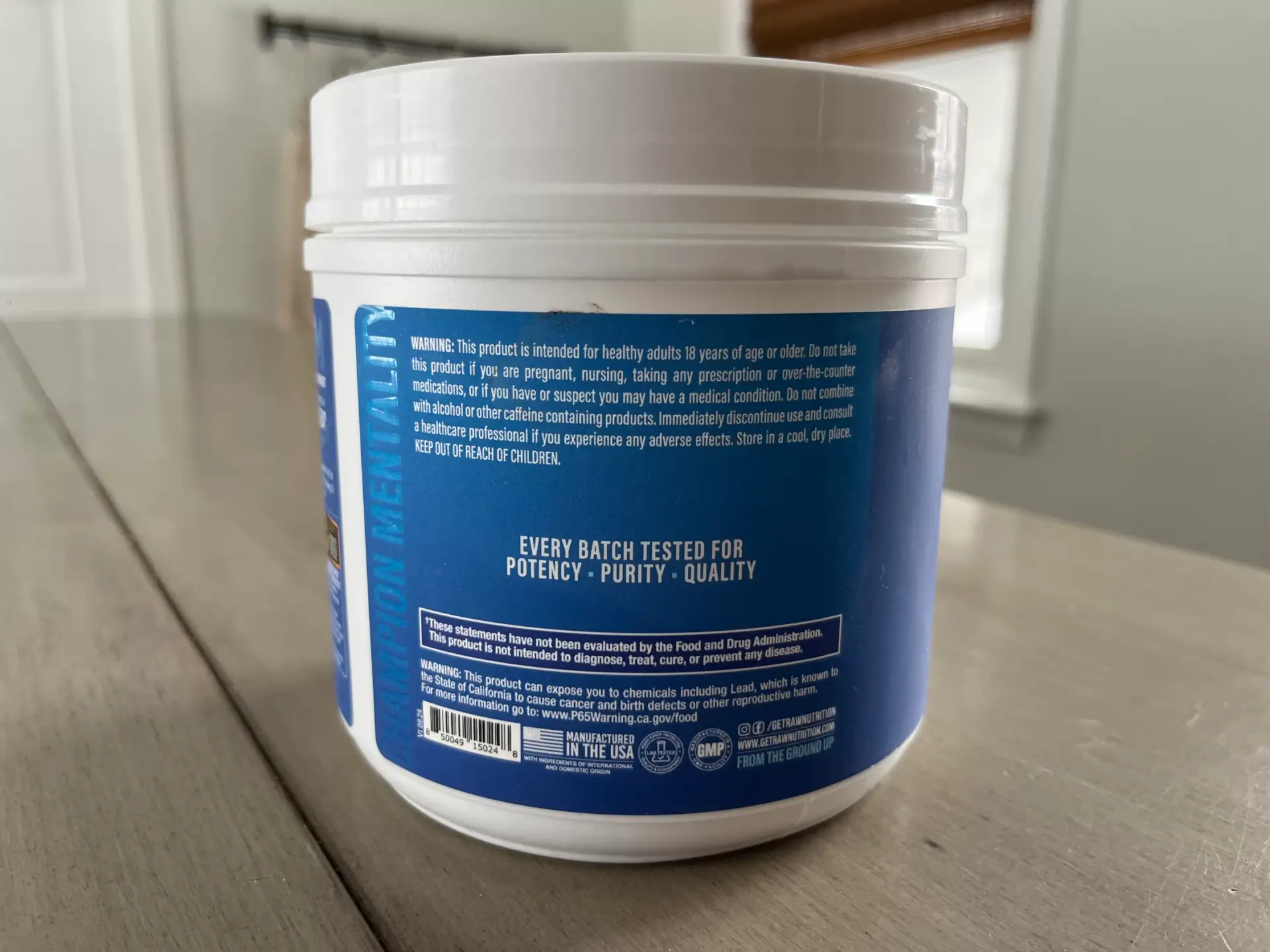
Got a solid block of pre-workout? Here’s how to fix it:
- Break it down manually: Use a spoon or fork to chip away at the block.
- Blend it: Pour the clumps into a blender or food processor and pulse until the powder is smooth again.
- Restore freshness: Add a silica gel packet or a small bag of rice to absorb excess moisture, then store in an airtight container.
These steps can help save your clumpy pre-workout, saving you money and frustration.
Why Does Pre-Workout Clump?
Clumping happens because pre-workout contains hygroscopic ingredients—compounds that absorb moisture from the air.
Here are the main factors that cause this:
- Creatine and citrulline: These popular ingredients are very prone to moisture, which causes the clumping.
- Storage conditions: High humidity, warm temperatures, or improper sealing speed up clumping in your supplements.
- Wet scoops: Even a little water can turn powder into paste.
Clumping doesn’t usually affect the product’s effectiveness unless it’s accompanied by other spoilage signs, so it shouldn’t be a big worry.
Storage Tips to Prevent Clumping and Expiration
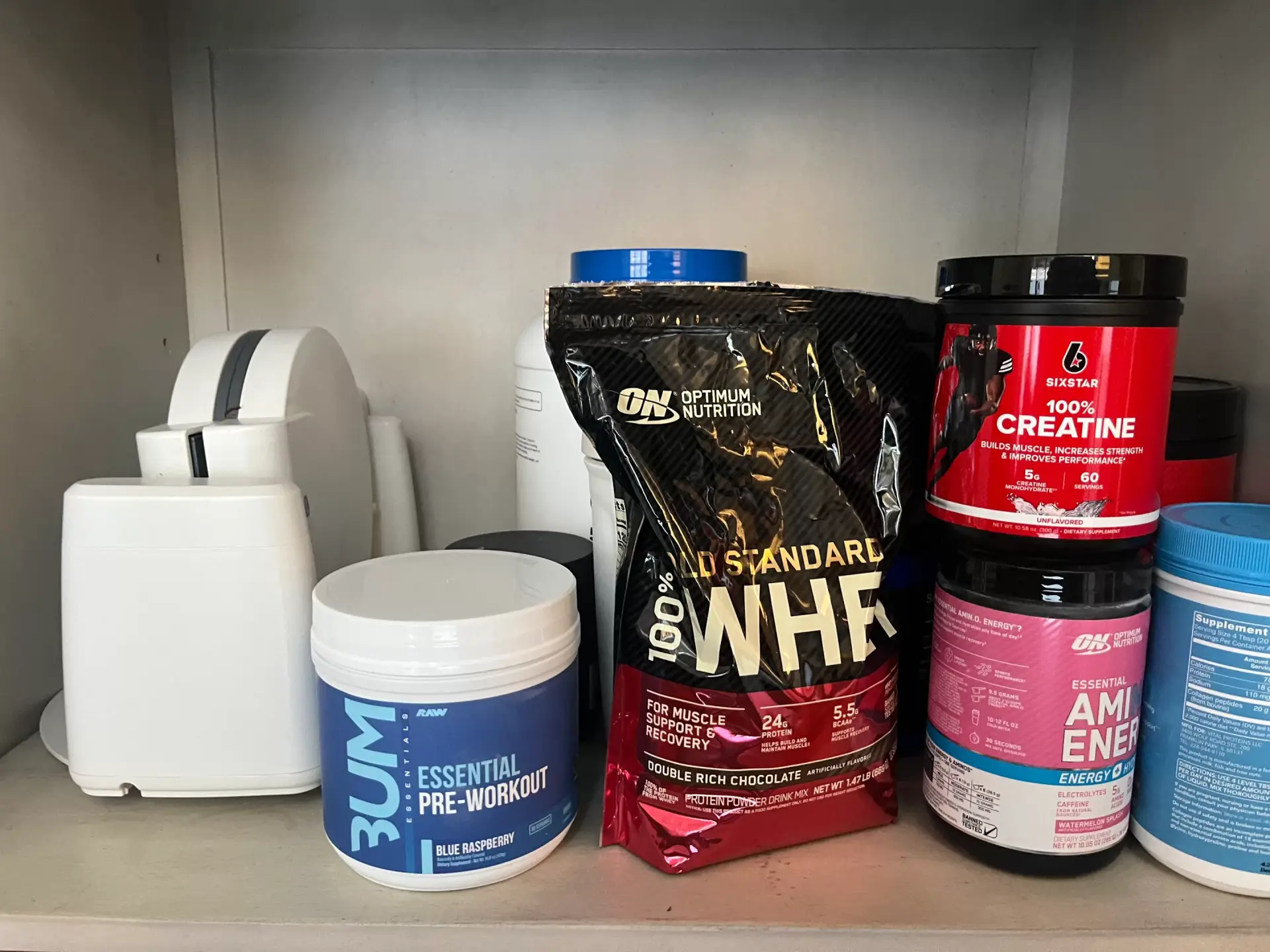
Proper storage is the best way to keep your pre-workout fresh. Harty et al. (2022) explains that the stability of pre-workout ingredients like caffeine and beta-alanine is heavily influenced by storage conditions.
Here’s how to do it right:
- Seal Tightly: Always screw the lid on securely after each use. If the original lid doesn’t fit tightly, consider transferring the powder to an airtight container.
- Store in a Cool, Dry Place: Choose a spot away from heat, sunlight, and humidity. Pantries or cupboards are ideal, but avoid locations like the bathroom or above the stove.
- Keep the Silica Packet: The silica packet absorbs excess moisture and helps maintain the powder’s texture. Don’t toss it out! I know it may get in the way of your scooping, but just keep it in there. I have made this mistake before too.
- Shake or Stir Regularly: Periodically shaking the container can help prevent the powder from settling and clumping over time.
- Avoid Wet Scoops: Always dry your scoop completely before using it to prevent introducing moisture into the container.
For those living in humid climates, storing pre-workout in the refrigerator can be a great option to keep your preworkout good. Just make sure the container is sealed tightly to prevent condensation from forming inside.
By storing pre workout supplements correctly, you will extend the shelf life of your pre-workout and save yourself from the hassle of dealing with clumps
FAQs About Pre-Workout Expiration
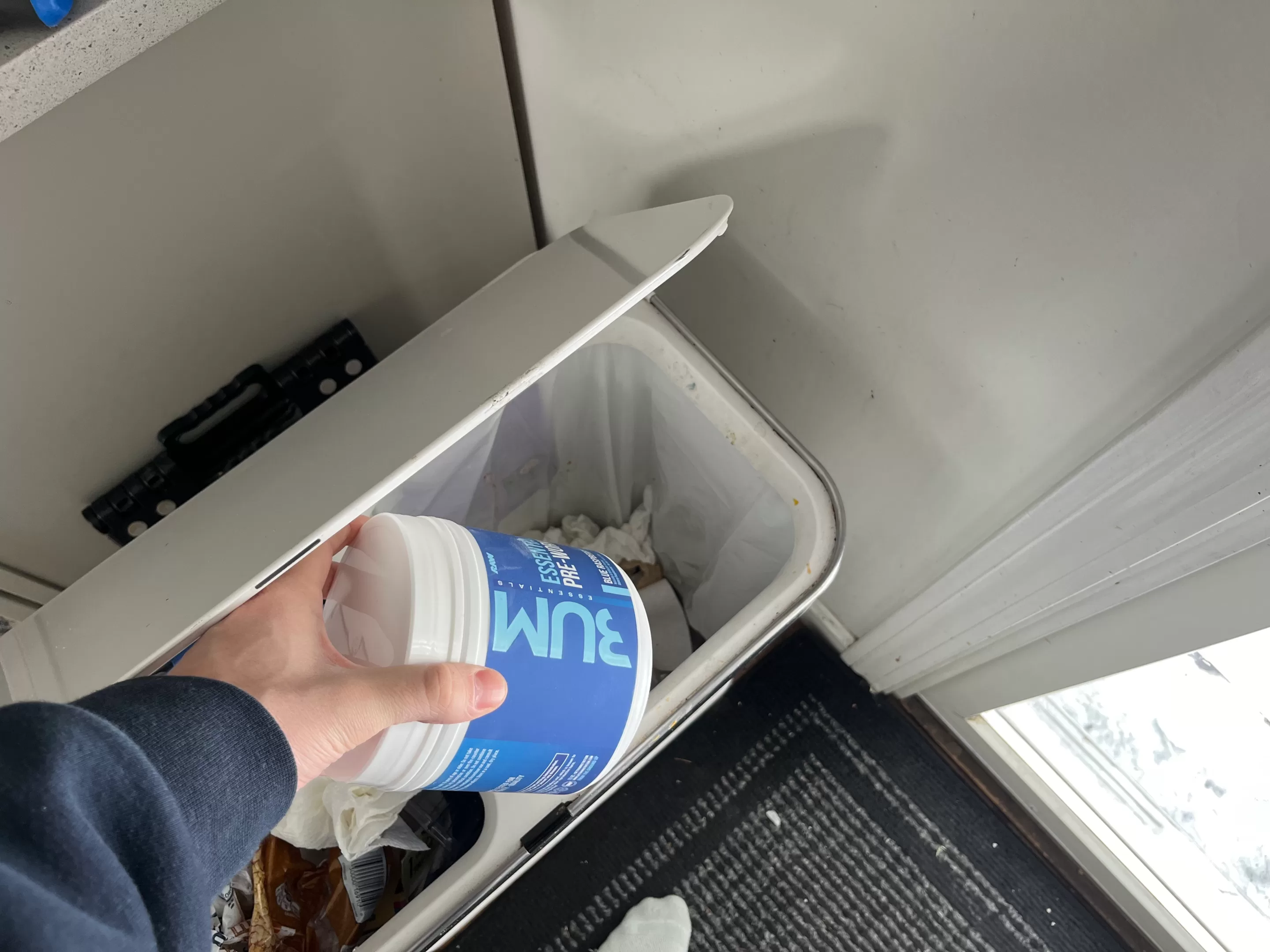
1. Can old pre-workout make you sick?
If it’s significantly past its expiration date or shows signs of mold, consuming old pre-workout can cause stomach upset or other mild side effects. Always check for spoilage before using.
2. How long does preworkout last once opened?
Opened pre workout supplements typically are best used within six months to a year, depending on how it’s stored. Keep it in a cool, dry place to extend its shelf life.
3. Is clumpy preworkout less effective?
No, clumpy pre workout powder isn’t usually any less effective, as long as the product hasn’t expired or spoiled.
4. How do you know if pre-workout has gone bad?
Expired pre workout supplements usually have some signs. Look for mold, discoloration, a bad smell, or major clumping. These are clear signs it’s time to toss it.
Wrapping it Up: Does Preworkout Expire?
Pre-workout can clump and expire, but with proper storage and care, you can extend its shelf life and avoid waste. If your pre-workout is clumpy but otherwise fresh, simple fixes like blending can bring it back to life.
When in doubt, trust your senses—if something seems off, it’s better to toss the tub and start fresh. Preworkout doesn’t cost too much, and there is no point in risking your health for a quick boost of energy before the gym.
By following these tips, you’ll keep your pre-workout ready to help you push through the toughest workouts. Now, go take that scoop of preworkout, get amped up, and crush that workout!
References
- Harty PS, Zabriskie HA, Erickson JL, Molling PE, Kerksick CM, Jagim AR. Multi-ingredient pre-workout supplements, safety implications, and performance outcomes: a brief review. J Int Soc Sports Nutr. 2018 Aug 8;15(1):41. doi: 10.1186/s12970-018-0247-6. PMID: 30089501; PMCID: PMC6083567.
- Eudy, A. E., Gordon, L. L., Hockaday, B. C., Lee, D. A., Lee, V., Luu, D., Martinez, C. A., & Ambrose, P. J. (2013). Efficacy and safety of ingredients found in preworkout supplements. American Journal of Health-System Pharmacy, 70(7), 577–588. https://doi.org/10.2146/ajhp120118
- Jagim AR, Camic CL, Harty PS. Common Habits, Adverse Events, and Opinions Regarding Pre-Workout Supplement Use Among Regular Consumers. Nutrients. 2019 Apr 16;11(4):855. doi: 10.3390/nu11040855. PMID: 31014016; PMCID: PMC6520716.

